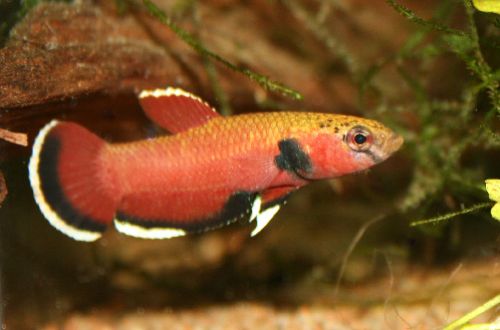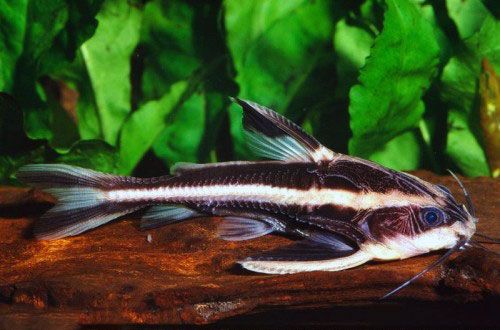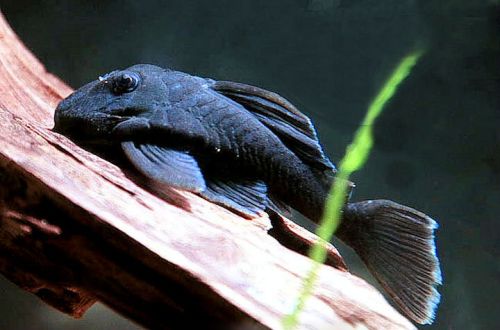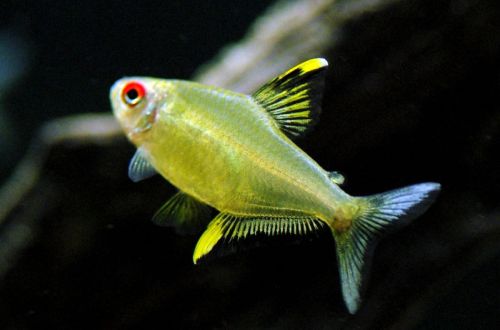
betta chana
Chan’s Betta or Chan’s Cockerel, scientific name Betta channoides, belongs to the Osphronemidae family. It belongs to the group of fighting fish, although it does not differ in a fighting disposition, on the contrary, it is considered to be a completely peaceful and calm species. Maintenance can cause some difficulties in terms of water treatment, so it is not recommended for beginner aquarists.

Contents
Habitat
It comes from Southeast Asia from the Indonesian island of Borneo. Inhabits the basin of the Mahakam River, which flows through the territory of the province of East Kalimantan. It is found in small streams and rivers, backwaters, in wetlands. It keeps close to the shore among the underwater roots of trees, snags and thickets of aquatic plants.
Brief information:
- The volume of the aquarium – from 40 liters.
- Temperature – 23-30°C
- Value pH — 4.0–6.0
- Water hardness – 1–5 dGH
- Substrate type – any
- Lighting – subdued
- Brackish water – no
- Water movement – weak or absent
- The size of the fish is about 4 cm.
- Food – any food
- Temperament – peaceful
- Content – singles, pairs or in a group
Description
Adults reach a length of about 4 cm. Males are somewhat larger than females and have a bright red color, fins and tail have a black and white border. Females are not so expressive; dark and gray shades are combined in color.
Food
In nature, they feed on small invertebrates and other zooplankton. In the conditions of a home aquarium, they adapt to the reception of alternative products. For example, the daily diet may consist of dry food in the form of flakes, pellets, combined with live or frozen products from artemia, daphnia, bloodworms, etc.
Maintenance and care, arrangement of the aquarium
The optimal size of the aquarium for one or two fish starts from 40 liters. Betta Chana is not demanding in design, however, the use of elements inherent in the natural habitat is considered the most acceptable. Namely: dark soil, natural driftwood, shade-loving plants, including floating ones, leaf litter. As for the leaves, they are not only part of the design, but also serve as a means of giving water a composition characteristic of natural reservoirs, due to the release of tannins during decomposition. Read more about this in the article “Which tree leaves can be used in an aquarium.”
Long-term successful management is entirely dependent on maintaining a stable aquatic environment within an acceptable range of temperatures and hydrochemical values. It is impossible to allow the accumulation of organic waste (feed leftovers, excrement) that can lead to disruption of the normal course of the nitrogen cycle. An aquarium with fish requires regular maintenance, this is at least a weekly replacement of part of the water with fresh water and cleaning the soil, walls and design elements from waste / plaque. When renewing water, it is important that it has the same pH and dGH values as the “old” water.
The set of equipment to be installed depends on the volume of the tank, the number of fish and, of course, the financial capabilities of the aquarist. Of all the variety, it is worth highlighting the filtration system, which is considered to be mandatory. For small volumes, a simple airlift filter with a sponge is fine.
Behavior and Compatibility
Belonging Chan’s Cockerel to the Betta fish group can be misleading as to his behavior. In fact, there is nothing of a “fighting” character in it, it is nothing more than a classification within the Osphronemidae family. Of course, males compete with each other for the attention of females, but it usually doesn’t come to skirmishes. In a spacious aquarium there can be several males and females at the same time, but in small volumes it is still worth limiting to one pair. Due to their size, they cannot compete with large species. It is advisable to select small peace-loving, able to live in a similar environment.
Breeding / breeding
In the course of evolution, some Betta fish have developed an unusual way of reproduction, or rather a mechanism for protecting offspring. At the end of spawning, males take the fertilized eggs into their mouths, where they will stay for the next 10–21 days. All this time, the male does not eat and seeks to hide in a quiet corner of the aquarium. The female “patrols” the surroundings, protecting from any potential danger. With the advent of fry, parental instincts weaken, however, juveniles can safely be near adult fish without fear of being eaten.
Fish diseases
The cause of most diseases is unsuitable conditions of detention. A stable habitat will be the key to successful keeping. In the event of symptoms of the disease, first of all, the quality of the water should be checked and, if deviations are found, measures should be taken to correct the situation. If symptoms persist or even worsen, medical treatment will be required. Read more about symptoms and treatments in the Aquarium Fish Diseases section.





